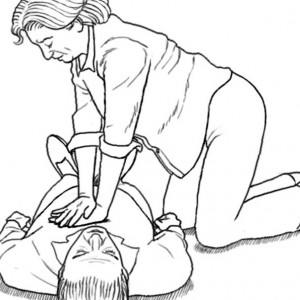 Knowing your biometric numbers is a very valuable tool to identify health risk. Unfortunately many of us do not proactively monitor our bio-metric numbers until we show symptoms when it can be to late. That’s like not checking the oil in your car till the engine blows up.
Knowing your biometric numbers is a very valuable tool to identify health risk. Unfortunately many of us do not proactively monitor our bio-metric numbers until we show symptoms when it can be to late. That’s like not checking the oil in your car till the engine blows up.
Month: August 2013
Traumatic Occupational Injury
 In 2010, there were an estimated 139,064,000 civilian workers in the U.S. private and public sector employed labor force, according to the Bureau of Labor Statistics Current Population Survey . Each day, many of these workers suffer injury, disability, and death from workplace incidents. In 2010, more than 4,500 U.S. workers died from occupational injuries. Although difficult to enumerate, annually about 49,000 deaths are attributed to work-related illnesses. In 2010, an estimated 3.9 million workers in private industry and state and local government had a nonfatal occupational injury or illness. Of those workers, 2 million were transferred, placed on work restrictions, or took time away from work. In the same year an estimated 2.6 million workers were treated in emergency departments for occupational injuries and illnesses, and approximately 110,000 of these workers were hospitalized (NIOSH, unpublished data, 2012).
In 2010, there were an estimated 139,064,000 civilian workers in the U.S. private and public sector employed labor force, according to the Bureau of Labor Statistics Current Population Survey . Each day, many of these workers suffer injury, disability, and death from workplace incidents. In 2010, more than 4,500 U.S. workers died from occupational injuries. Although difficult to enumerate, annually about 49,000 deaths are attributed to work-related illnesses. In 2010, an estimated 3.9 million workers in private industry and state and local government had a nonfatal occupational injury or illness. Of those workers, 2 million were transferred, placed on work restrictions, or took time away from work. In the same year an estimated 2.6 million workers were treated in emergency departments for occupational injuries and illnesses, and approximately 110,000 of these workers were hospitalized (NIOSH, unpublished data, 2012).
Each year occupational injuries and illnesses cause employers, workers, and society to pay tremendous costs for workers’ compensation and other insurance, medical expenses, lost wages and productivity, and the personal and societal costs associated with day to day living for injured and ill workers. In 2009, employers spent $74 billion on workers’ compensation insurance alone.
via CDC – Directory of NIOSH Traumatic Occupational Injury Resources.
Staying Safe on Campus
 Throughout your college career, you will have plenty of stressors in your life, such as exams, papers, presentations, jobs, friends, and even family. If you are like the average college student, you have or will have enough on your mind without having to worry about school safety, but unfortunately, in this day and age, staying safe on campus is an issue that students must think about. Because crime on college campuses has been on the rise within the past few years, it is crucial for students to follow certain safety tips. Click on the link at the bottom of this message to consider the tips so you stay protected during your time on campus.
Throughout your college career, you will have plenty of stressors in your life, such as exams, papers, presentations, jobs, friends, and even family. If you are like the average college student, you have or will have enough on your mind without having to worry about school safety, but unfortunately, in this day and age, staying safe on campus is an issue that students must think about. Because crime on college campuses has been on the rise within the past few years, it is crucial for students to follow certain safety tips. Click on the link at the bottom of this message to consider the tips so you stay protected during your time on campus.
Respirators
 Respirators protect the user in two basic ways. The first is by the removal of contaminants from the air. Respirators of this type include particulate respirators, which filter out airborne particles; and “gas masks” which filter out chemicals and gases. Other respirators protect by supplying clean respirable air from another source. Respirators that fall into this category include airline respirators, which use compressed air from a remote source; and self-contained breathing apparatus (SCBA), which include their own air supply.
Respirators protect the user in two basic ways. The first is by the removal of contaminants from the air. Respirators of this type include particulate respirators, which filter out airborne particles; and “gas masks” which filter out chemicals and gases. Other respirators protect by supplying clean respirable air from another source. Respirators that fall into this category include airline respirators, which use compressed air from a remote source; and self-contained breathing apparatus (SCBA), which include their own air supply.
via CDC – Respirators – NIOSH Workplace Safety and Health Topic.
What is Sudden Cardiac Arrest
 Sudden cardiac arrest is the sudden, unexpected loss of heart function, breathing and consciousness. Sudden cardiac arrest usually results from an electrical disturbance in your heart that disrupts its pumping action, stopping blood flow to the rest of your body.
Sudden cardiac arrest is the sudden, unexpected loss of heart function, breathing and consciousness. Sudden cardiac arrest usually results from an electrical disturbance in your heart that disrupts its pumping action, stopping blood flow to the rest of your body.
Sudden cardiac arrest is different from a heart attack, which occurs when blood flow to a portion of the heart is blocked. However, a heart attack can sometimes trigger an electrical disturbance that leads to sudden cardiac arrest.
Sudden cardiac arrest is a medical emergency. If not treated immediately, it causes sudden cardiac death. With fast, appropriate medical care, survival is possible. Administering cardiopulmonary resuscitation (CPR) — or even just compressions to the chest — can improve the chances of survival until emergency personnel arrive.
Portable Ladder Safety
 Falls from portable ladders (step, straight, combination and extension) are one of the leading causes of occupational fatalities and injuries.
Falls from portable ladders (step, straight, combination and extension) are one of the leading causes of occupational fatalities and injuries.
- Read and follow all labels/markings on the ladder.
- Avoid electrical hazards! – Look for overhead power lines before handling a ladder. Avoid using a metal ladder near power lines or exposed energized electrical equipment.
- Always inspect the ladder prior to using it. If the ladder is damaged, it must be removed from service and tagged until repaired or discarded.
- Always maintain a 3-point (two hands and a foot, or two feet and a hand) contact on the ladder when climbing. Keep your body near the middle of the step and always face the ladder while climbing (see diagram).
- Only use ladders and appropriate accessories (ladder levelers, jacks or hooks) for their designed purposes.
- Ladders must be free of any slippery material on the rungs, steps or feet.
- Do not use a self-supporting ladder (e.g., step ladder) as a single ladder or in a partially closed position.
- Do not use the top step/rung of a ladder as a step/rung unless it was designed for that purpose.
- Use a ladder only on a stable and level surface, unless it has been secured (top or bottom) to prevent displacement.
- Do not place a ladder on boxes, barrels or other unstable bases to obtain additional height.
- Do not move or shift a ladder while a person or equipment is on the ladder.
- An extension or straight ladder used to access an elevated surface must extend at least 3 feet above the point of support (see diagram). Do not stand on the three top rungs of a straight, single or extension ladder.
- The proper angle for setting up a ladder is to place its base a quarter of the working length of the ladder from the wall or other vertical surface (see diagram).
- A ladder placed in any location where it can be displaced by other work activities must be secured to prevent displacement or a barricade must be erected to keep traffic away from the ladder.
- Be sure that all locks on an extension ladder are properly engaged.
- Do not exceed the maximum load rating of a ladder. Be aware of the ladder’s load rating and of the weight it is supporting, including the weight of any tools or equipment.
Concussion in Youth Sports
 A concussion is a brain injury. Concussions are caused by a bump or blow to the head. Even a “ding” or what seems to be a mild bump or blow to the head can be serious. You can’t see a concussion. Signs and symptoms of concussion can show up right after the injury or may not appear or be noticed until days or weeks after the injury. If your child reports any symptoms of concussion or if you notice the symptoms yourself, seek medical attention right away.
A concussion is a brain injury. Concussions are caused by a bump or blow to the head. Even a “ding” or what seems to be a mild bump or blow to the head can be serious. You can’t see a concussion. Signs and symptoms of concussion can show up right after the injury or may not appear or be noticed until days or weeks after the injury. If your child reports any symptoms of concussion or if you notice the symptoms yourself, seek medical attention right away.
Heads Up: Concussion in Youth Sports
via CDC – Family Health – Parents: ABCs of Raising Safe and Healthy Kids.
Motor Vehicle Safety on The Job
 Risk of work-related motor vehicle crashes cuts across all industries and occupations. Workers who drive on the job may be “professional” drivers whose primary job is to transport freight or passengers. Many other workers spend a substantial part of the work day driving a vehicle owned or leased by their employer, or a personal vehicle. In the United States, companies and drivers that operate large trucks and buses are covered by comprehensive safety regulations. In contrast, there are no Federal occupational safety regulations that cover the workers who use smaller employer-provided vehicles or personal vehicles.
Risk of work-related motor vehicle crashes cuts across all industries and occupations. Workers who drive on the job may be “professional” drivers whose primary job is to transport freight or passengers. Many other workers spend a substantial part of the work day driving a vehicle owned or leased by their employer, or a personal vehicle. In the United States, companies and drivers that operate large trucks and buses are covered by comprehensive safety regulations. In contrast, there are no Federal occupational safety regulations that cover the workers who use smaller employer-provided vehicles or personal vehicles.
For all workers who drive on the job, employer safety policies are a critical element in reducing crash risks. Employer policies may be limited to supporting and reinforcing state traffic laws. However, many employers choose to manage road risk more proactively through programs and policies to promote safe driving behaviors, ensure that work-related driving takes place under the safest possible conditions, and ensure that worker vehicles are safe and properly maintained.
via CDC – Motor Vehicle Safety – NIOSH Workplace Safety and Health Topic.
Raising Awareness About Electric Shock Drowning
 Conscientious parents, who would never imagine letting their children go boating without a life vest or ride in a car without securing their seat belts, often have no qualms about letting a child jump off a dock into fresh water. What these parents don’t realize is that if the dock has120-volt AC power, lethal amounts of electricity could be finding their way into the water from faulty wiring on the dock or a boat. In a one-week period this past July, four children and one young adult were killed in separate electric shock drowning (ESD) incidents at docks on freshwater lakes.
Conscientious parents, who would never imagine letting their children go boating without a life vest or ride in a car without securing their seat belts, often have no qualms about letting a child jump off a dock into fresh water. What these parents don’t realize is that if the dock has120-volt AC power, lethal amounts of electricity could be finding their way into the water from faulty wiring on the dock or a boat. In a one-week period this past July, four children and one young adult were killed in separate electric shock drowning (ESD) incidents at docks on freshwater lakes.
via BoatUS: Seaworthy Magazine: Raising Awareness About Electric Shock Drowning | October ’12.
Electrical Safety
 Electrical current exposes workers to a serious, widespread occupational hazard; practically all members of the workforce are exposed to electrical energy during the performance of their daily duties, and electrocutions occur to workers in various job categories. Many workers are unaware of the potential electrical hazards present in their work environment, which makes them more vulnerable to the danger of electrocution.Electrical injuries consist of four main types: electrocution fatal, electric shock, burns, and falls caused as a result of contact with electrical energy.
Electrical current exposes workers to a serious, widespread occupational hazard; practically all members of the workforce are exposed to electrical energy during the performance of their daily duties, and electrocutions occur to workers in various job categories. Many workers are unaware of the potential electrical hazards present in their work environment, which makes them more vulnerable to the danger of electrocution.Electrical injuries consist of four main types: electrocution fatal, electric shock, burns, and falls caused as a result of contact with electrical energy.
via CDC – Electrical Safety – NIOSH Workplace Safety and Health Topic.
